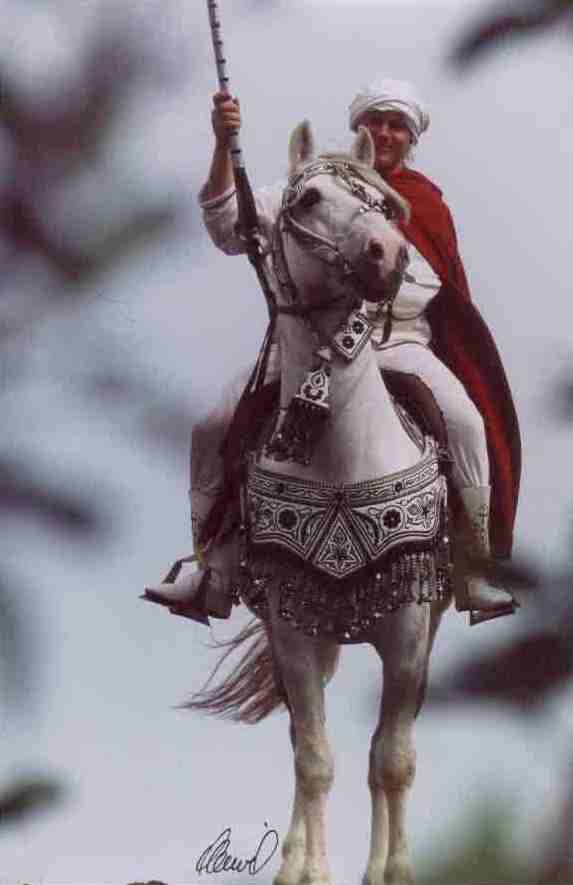
Picture Christiane Slawik
Historic
One of the oldest races in the world
The long established fact that the horse did not exist in the Sahara in prehistoric times has now been proved differently. Research undertaken in Algeria established that bones of equine species were found in geological layers that are 4000 years old and more. Anyway, in North Africa, the horse has always been part of the man’s life, right down through the years. Cave paintings of horses were found in Algeria.

Picture Christiane Slawik
A breed with exceptional qualities
During the Roman time the emperors sent to seek the famous Carthage warriors and on horseback to build up of their cavalry to invade Gaules and Europe. The robustness, endurance, rusticity, sobriety and its sporting qualities already made the reputation of the barb. However its psychic qualities, its exceptional assimilation faculties and comprehension of what we want to obtain from him, that, already at that time made the difference between the barb and the other breeds.
Strabon (58 BC. JC, 25 AD) describes in his writings, the remarkable way that the numid riders of North Africa rode their horses "without brake "i.e. without harness or bit. Sometimes a rope around the neck was used to slow down or direct some horses.
The Arabian who brought Islam to Maghreb in the eightcentury also used these horses, by dispatching their own horses at various points along the route, they acquired barb horses. This took place while they crossed Libya, Tunisia, Algeria and Morocco to invade Spain.

Picture Christiane Slawik
In the next century, the monarchs of France, famous riders like Antoine de Pluvinel and Robichon de la Guérinière sang the praises of the barb, which was for them the best dressage horse.
The Napoléon armies also used the barb. The French
Spahis regiments were equipped exclusively with barbs. During the last
world war, a German regiment rode, under very difficult conditions, on
barbs which were requisitioned by Romel in Tunisia, to Moscow. No other
horse could support such a trial as did the barb.
Nowadays in France
In France, with the dissolution of the Spahis regiments, their horses were distributed throughout all the horse companies. All riders today between 45 and 70 years old, began on these horses, as they were used as school horses and also sports horse and produced very good results.
In 1962, after the Algeria independence, the Barb Stud-book in France was removed. The race did not exist officially any more and best mares, those which were really good in horse shows or had great capabilities in dressage were formed, alongside others, the initial basis for the Stud-book of the Selle Francais (i.e. registered like "factor of Selle Francais". Slowly the barb was forgotten except for the merchants who imported some from North Africa through the ports of Marseilles and Sète. Often they sold them to the horsemeat butchers or as trekking horses. Unknown to all they did an excellent job without recognition.
A group of people with great nostalgic sentiments of the barb, fanatics of this breed, grouped around the veterinary Jean Devaux, a former Spahi and worked to establish by their own means a genealogical register of the barb in France. They contributed to the creation of the Organisation Mondiale du Cheval Barbe (OMCB) and achieved in 1989 the opening of a barb stud-book by the Haras Nationaux. Before this, they had created the Association of the Barb Horse which quickly became known as the French Association of the Barb Horse (AFCB). This association, in collaboration with the Haras Nationaux, co-ordinates the barb stud-book, the contests of breeding and approvals of stallions. The association also advocates the promotion of the barb in France and brings together amateurs, owners or those with an affinity towards this breed with the breeders.